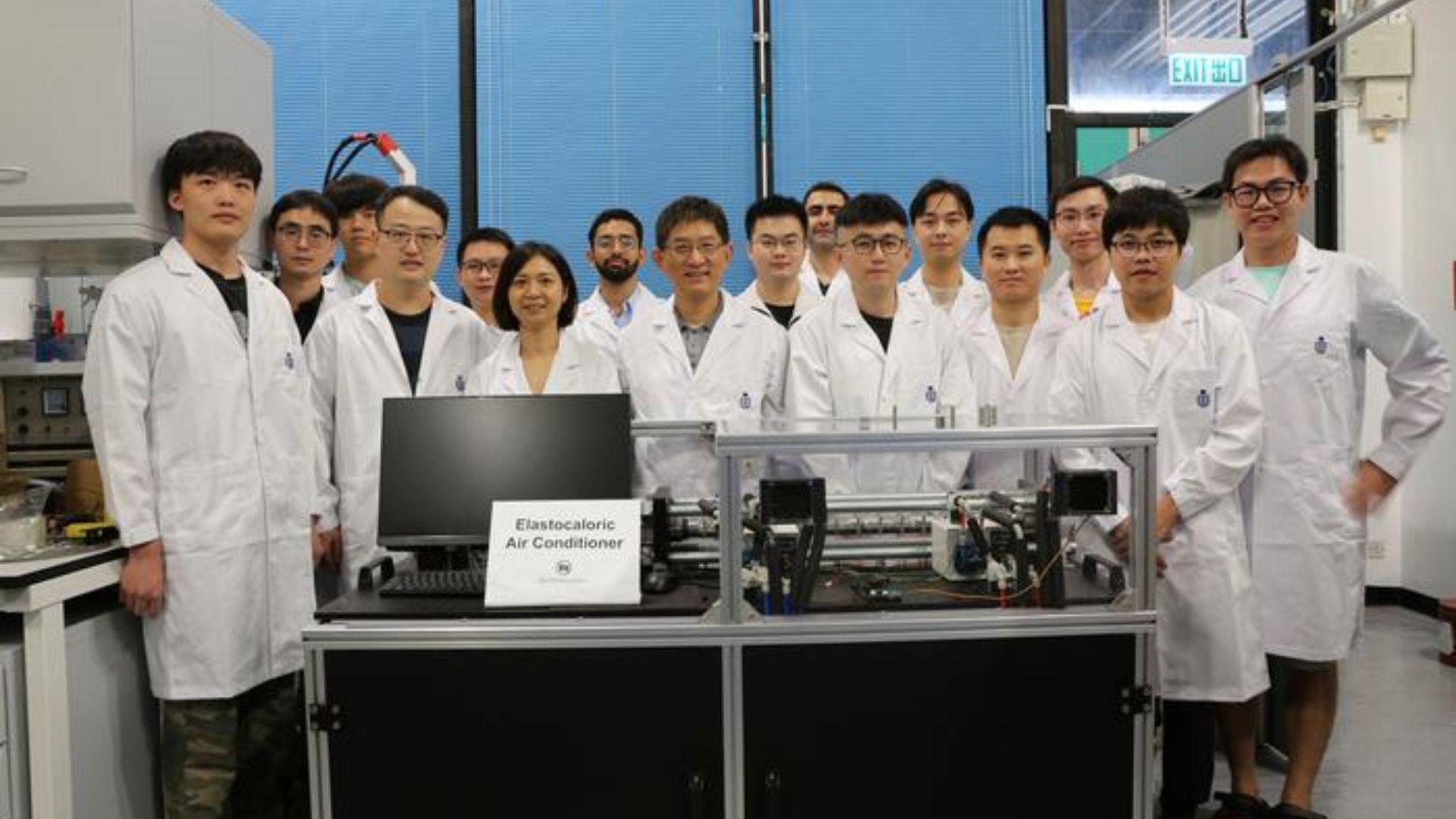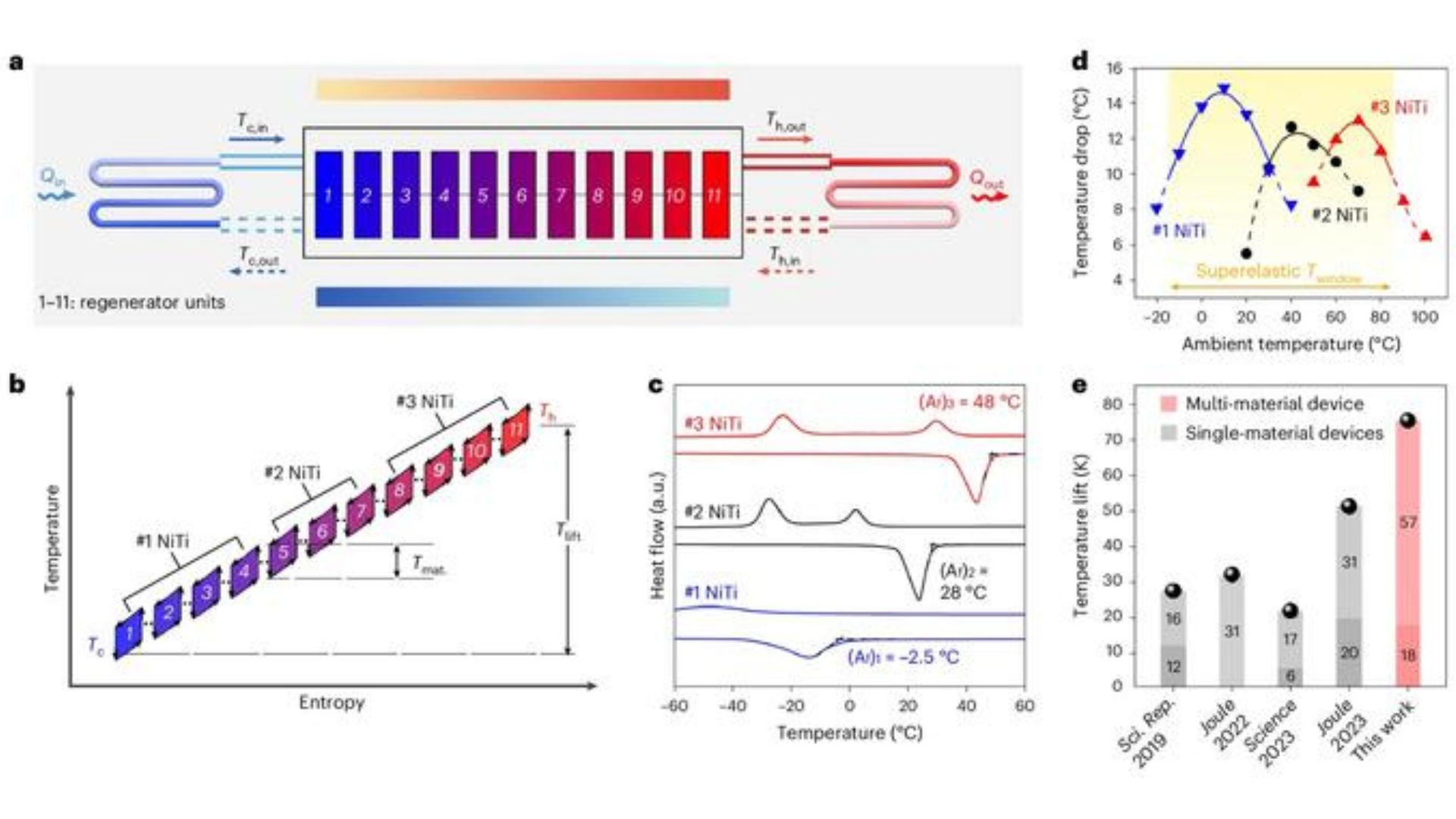Thursday, 25/12/2025 | 03:36 GMT+7
The Hong Kong University of Science and Technology (HKUST) team claims that its system offers record-breaking cooling performance and an efficiency of over 48 %.
According to researchers, the new elastocaloric cooling technology offers a viable path forward by eliminating the environmental issues related to conventional cooling systems and speeding up the commercialization of this game-changing technology.
“In the future, with the continuous advancement of materials science and mechanical engineering, we are confident that elastocaloric refrigeration can provide next-generation green and energy-efficient cooling and heating solutions to feed the huge worldwide refrigeration market, addressing the urgent task of decarbonization and global warming mitigation,” said Sun Qingping, from the HKUST’s Department of Mechanical and Aerospace Engineering, in a statement.

The Hong Kong University of Science and Technology team with their elastocaloric air conditioner.
High global warming potential refrigerants are used in conventional vapor compression refrigeration technologies.
Caloric cooling devices represent a new category of materials that alter their temperature in response to specific conditions. Elastocaloric materials, for example, react to mechanical forces like stretching or compressing by absorbing heat when the strain is released.
These materials are non-volatile, meaning they don’t readily evaporate into a gas, which means they have no significant impact on global warming. This makes them highly promising for use in alternative refrigeration technologies.
According to researchers, with its features of greenhouse gas-free, 100 percent recyclable, and energy-efficient shape memory alloy (SMA) refrigerants, solid-state elastocaloric refrigeration based on latent heat in the cyclic phase transition of SMAs offers an environmentally benign substitute.
However, the commercialization of this developing technology has been hampered by the relatively limited temperature rise between 20 and 50 K, which is a significant performance indicator of the cooling device’s ability to transfer heat from a low-temperature source to a high-temperature sink.
The research team overcame the obstacle by creating a multi-material cascading elastocaloric cooling device made of nickel-titanium (NiTi) shape memory alloys, which broke the previous record for cooling performance.
Three NiTi alloys were chosen to function at the cold end, intermediate end, and hot end, respectively, with varying phase transition temperatures. Each NiTi unit operated within its ideal temperature range, greatly increasing the cooling efficiency. By matching the working temperatures of each unit with the associated phase transition temperatures, the device’s superelastic temperature window was extended to over 100 K.

The multi-material cascade elastocaloric regenerator and performance comparison.
Researchers claim the constructed multi-material cascade elastocaloric cooling mechanism surpassed the previous world record of 50.6 K by achieving a temperature rise of 75 K on the waterside.
Building on their achievements with elastocaloric cooling materials, the research team now aims to advance the development of high-performance shape memory alloys and devices for both sub-zero elastocaloric cooling and high-temperature heat pumping.








 Webinar 2: “Financial Support for Energy Efficiency Enterprises – Opportunities and Challenges”
Webinar 2: “Financial Support for Energy Efficiency Enterprises – Opportunities and Challenges”
 Vietnamese enterprises achieve green growth and cut costs through energy efficiency
Vietnamese enterprises achieve green growth and cut costs through energy efficiency
 Capacity Building for Program Implementing Entity
Capacity Building for Program Implementing Entity
 Enhance Energy Efficiency Knowledge for Managers of Cement Industrial Enterprises
Enhance Energy Efficiency Knowledge for Managers of Cement Industrial Enterprises
 Capacity building for participating financial institutions of the VSUEE Project
Capacity building for participating financial institutions of the VSUEE Project
 Capacity building for participating financial institutions in Ho Chi Minh City
Capacity building for participating financial institutions in Ho Chi Minh City
 Strengthening capacity for energy management officers of local government agencies
Strengthening capacity for energy management officers of local government agencies